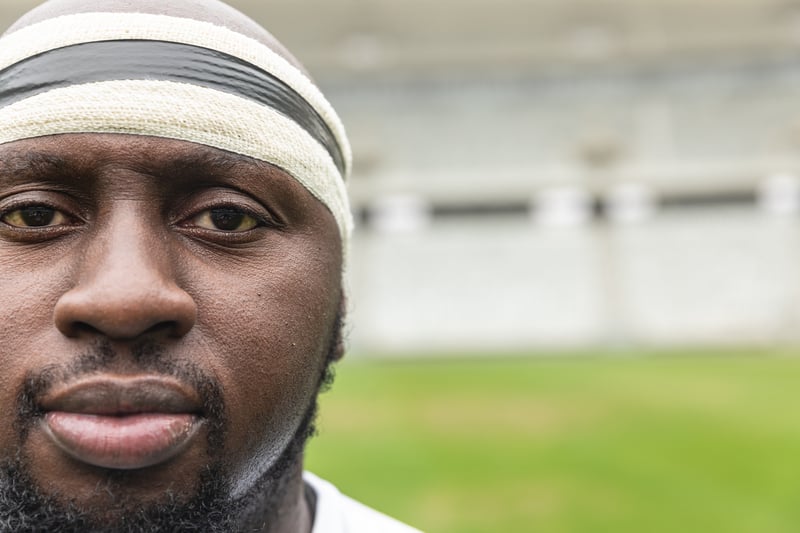
Ever watched a game of rugby and noticed that some of the players are wearing tape? Certain players will be wearing it on their thighs, others on their wrists, some will have it wrapped around their heads. So what is the reason for all the tape?
Tape around a head protects the ears when in scrums, mauls or competing at the breakdown. Tape around the thighs gives the players more grip when lifting the receiver in a lineout. Tape around the wrists offers both insulation and additional support to one of the more frequently used muscles in the game.
So, let’s take a look at this tape wearing in a bit more detail. I’m going to cover which players wear tape on which body part. What sort of tape they puse. How they apply it, and what protection it’s actually providing.
Why do rugby players wear tape around their heads?
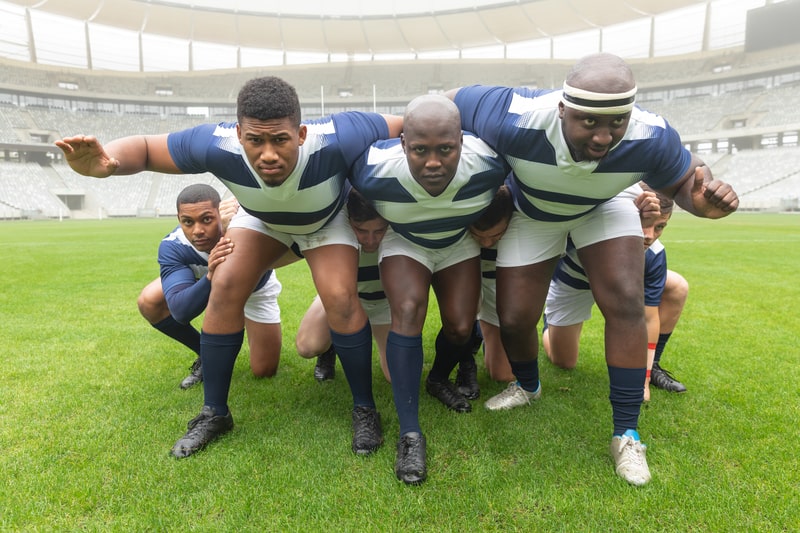
Rugby players tape their heads to offer protection to their ears and hopefully prevent the onset of cauliflower ear. This is a condition that’s caused by blunt trauma and or frequent contact to the ear, that eventually causes it to fold in on itself.
Imagine playing as a 2nd row or number 8. At every scrum you’ll either be packing down with your head locked between the right and left hip of a burly prop and hooker or a couple of 2nd row forwards. Over the course of an 80 minute match, if unprotected, your ears would get a proper old bashing wouldn’t they? It’s not the most pleasant thought. Now imagine that, every weekend for however many years, plus a day or so a week training.
In the 2020 world cup, there were on average 13.3 scrums per match. However, that’s top tier rugby with highly skilled athletes making fewer handling errors than those who play the amateur game. Logic tells us there would be more scrums in an amateur game of rugby.
Let’s take a conservative estimate and say there are an average of 16 scrums a match. And that each scrum lasts around 10-30 seconds; so an average of 20 seconds. That’s 5.33 minutes of match time scrummaging, once a week. That’s without even considering the additional time due to all the stoppages and resets. Now suppose you play rugby for 10 years. This works out at around 46 hours spent with your ears taking a pounding between your teammates’ hips in the scrum.
The scrum isn’t the only time players’ ears get a bashing. There’s also the time spent in a maul, in a ruck, or competing at the breakdown. Added to this is the potential impact to the ear when making a tackle.
This is why rugby players offer their ears some well deserved protection, in the form of either tape wrapped around their heads, or scrum caps.
What position do players that tape their heads play in?
You won’t often see any rugby players who play in the back line wearing tape around their ears. If you do it’s more than likely they’re carrying a head injury which needs protecting. They don’t pack down in scrums, or expose their ears to the same form of regular contact as a forward; and therefore don’t need to offer them the same level of protection.
However, for players that play in the scrum, it’s not unlikely for them to wear either tape around their ears, or a scrum cap. Out of the players in the scrum, it’s more common for players in the back row or 2nd row to be wearing ear protection, than for props and hookers.
How do rugby players tape their ears?
To tape their ears, rugby players use a combination of wide elastic adhesive bandage (EAB) and PVC insulation tape. For ear taping, they start at the level of the ear, bringing the tape over the eyeline, so as not to restrict eye view in any way, and around the lower part of the back of the head.
It’s really important to anchor the tape around the lower part of the back of the head. If you wrap the tape too high on the back of the head, it will just slide up and either lose tension or come off altogether.
After three or four layers, the elastic adhesive bandage is then secured in place with PVC insulation tape.
Check out this video that goes through the process of ear taping:-
Why do rugby players tape their thighs?
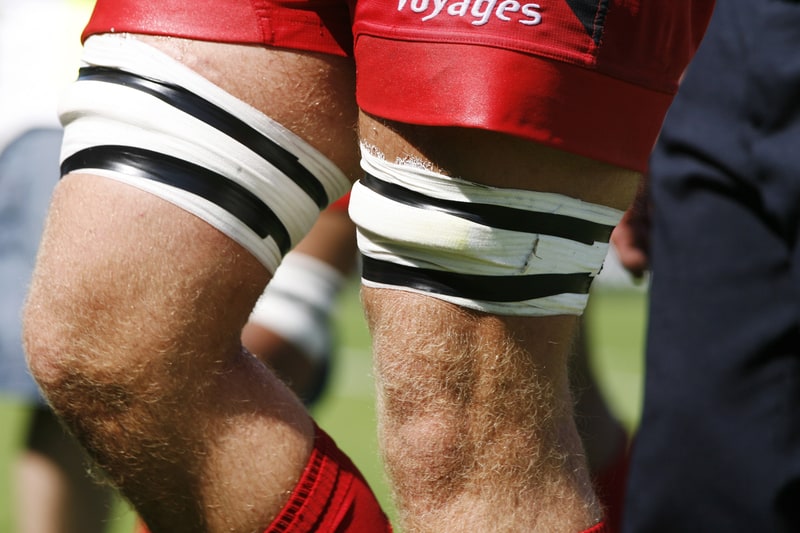
Rugby players tape their thighs in order to secure a lifting block in place. This provides a gripping point that their teammates can use in order to lift them in a lineout in a bid to receive the ball. The tape is worn on the lower thigh, just above the knee and is about 6 inches or 150-mm wide.
In the lineout a jumper will have two lifters. One stood directly behind and one directly in front. As the ball is thrown into the lineout, the font lifter turns around to face the jumper, squats and places his/her hands on the tape on the front of the lower thigh.
The back lifter squats and places his/her hands on the back of the jumper’s upper thigh, just below the buttocks. For the back lifter, the backside of the player who is jumping essentially acts as an anchor point, giving the lifter’s hands grip, preventing them slipping up towards the back and allowing them to hold the lift.
If the jumper wasn’t wearing any tape, there would be no lifting block for the front lifter’s hands. This would make the task of keeping their hands on the same one point of the thigh, without them slipping up the leg during the lift, that much trickier.
When the jumper is wearing tape, the lifters have an anchor point and as such don’t have to squeeze the thighs to keep their hands in the same position. As long as their hands locate the right point on the tape, beneath the lifting block, they just need to focus on the lift. The lifting block also makes holding the player in the lift far easier.
What position do players that tape their thighs play in?
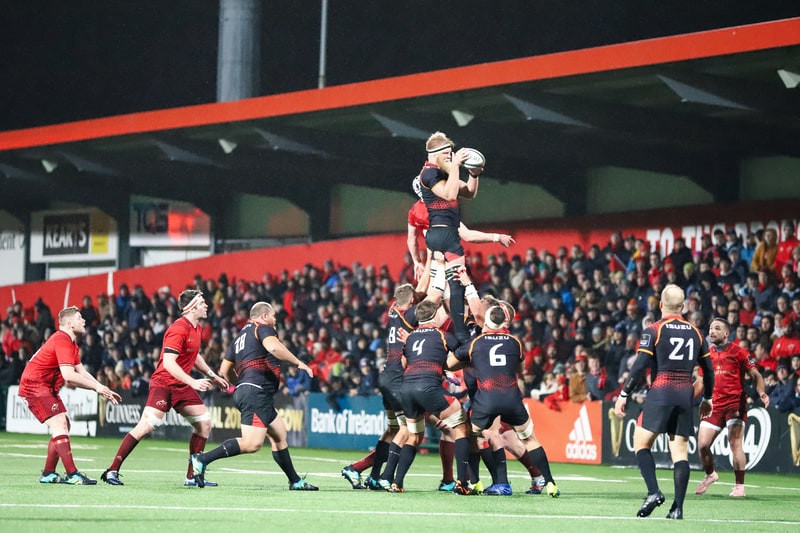
The backs don’t wear tape on their thighs as they don’t compete in the set play of a lineout – this is speciality work for the forwards. It’s only a handful of the eight forwards (people that play in the scrum) in the team that wear tape on their thighs. These are the receivers in the lineout, the ones who will be jumping to catch the ball in the set play.
The receivers will usually include the two 2nd row players, as in most cases they’re easily the two tallest players on the pitch. Some of the three back row players will also wear tape on their thighs, depending on whether they’ve been selected to be a receiver or not.
How do rugby players tape their thighs?
To tape the thighs, players use a foam block, elastic adhesive tape and PVC insulation tape. The tape shouldn’t be applied too tightly, which could restrict movement. It wants to be applied just above the knee, but making sure it doesn’t cover the top of the knee or restrict too much of the hamstring tendons.
The foam block should be mounted on the elastic adhesive tape and then covered in it. It is then secured in place by wrapping PVC insulation tape underneath the lifting block, around the leg and above the lifting block around the leg.
You can also check out this video if you want to see how rugby players tape their thighs:-
Why do rugby players tape their wrists?
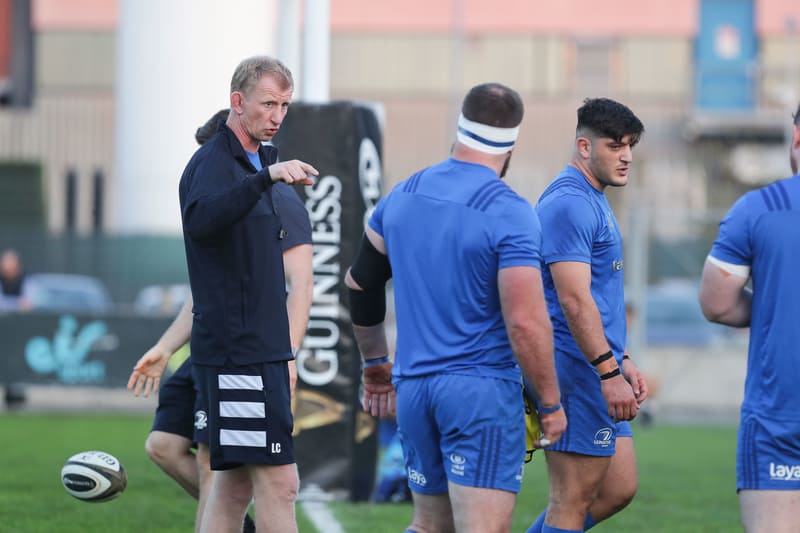
Rugby players wear tape on their wrists to provide extra support and strength in that area. Slightly restricting the movement of the wrist by taping it makes it stronger and less prone to potential impact injuries that can occur in the contact game of rugby. Wrist taping also enhances your grip.
Supporting the tendons in the wrist increases finger strength and gives you a greater chance of clinging on to a player in the tackle who’s threatening to escape from your defensive clutches.
Tape around the wrist also provides insulation on colder days. You can lose a lot of body heat from your wrist because the lack of flesh around it, which means that your blood is closer to the skin. This insulation will increase handling skills, because your fingers will be warmer, and therefore more responsive.
Some players will extend the taping from their wrist, down to their thumb in order to provide extra support and prevent injury.
How do rugby players tape their wrists?
To tape their wrists, players use an elastic adhesive bandage followed by some zinc oxide tape. The elastic adhesive bandage provides both insulation for the wrist and a mounting point for the zinc oxide tape. The zinc oxide tape provides the additional support to the wrist by restricting movement. It also secures the elastic adhesive bandage in place.
On their wrists, rugby players will usually use an elastic adhesive bandage that’s around 5-cm wide and a zinc oxide tape that’s around 2.5 – 3.8cm wide.
